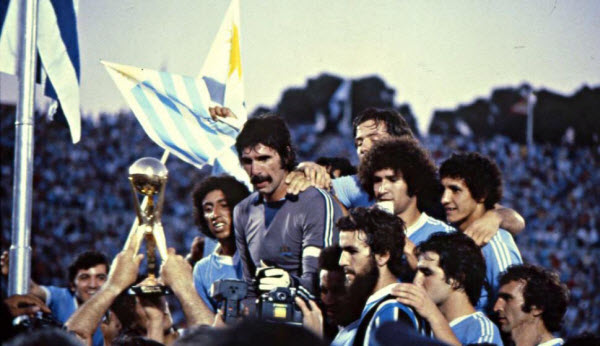The FIFA World Cup is one of the most prestigious global tournaments in football, eagerly anticipated by fans every four years. It showcases top teams competing for the coveted trophy and the honor of being named world champions. However, you might be surprised to learn about a smaller, yet equally fascinating, tournament known as the “Mundialito” or Mini World Cup. This event, organized under the auspices of FIFA, features teams that have previously won the World Cup.
The story of the Mundialito began over forty years ago, in 1980. Six of the world’s leading football teams, each a past World Cup winner, traveled to Montevideo, Uruguay, to participate in this special tournament. The Mundialito was organized to celebrate the 50th anniversary of the inaugural World Cup, which was held in Uruguay in 1930. The idea for this tournament was proposed by Uruguayan referee Román Chargarro, who suggested that the best way to commemorate the first World Cup was to organize a competition between the national teams of all the countries that had won it.
In response to this proposal, FIFA President João Havelange, who was also a member of the International Olympic Committee, gave his approval for the tournament during his visit to Montevideo for the IOC session in 1979. He saw it as a great opportunity, perhaps the only one of its kind, though he was concerned that European teams might be hesitant to participate or might not bring their best players due to the timing of the event.
Havelange’s concerns about the success of the Mundialito stemmed from its scheduled date in December 1980, a period right in the middle of the European football season. This timing made it challenging to excite European teams about participating. To overcome this obstacle, a financial incentive was offered: $150,000 for each participating team and an additional $70,000 for the winner. This prize money successfully encouraged the teams to attend.
The tournament attracted significant media attention, with 37 television channels worldwide applying to broadcast the event. They requested that the matches be broadcast in color rather than the black-and-white broadcasts typical of Uruguayan television at the time. This request was met by upgrading the broadcasting equipment with the latest technology. The tournament’s mascot was a young native boy named “Charrúa,” and he was represented in magazines and on television by a seven-year-old child named Diego Schaffer.

The participating teams included Uruguay, Italy, West Germany, Brazil, and Argentina, with England withdrawing due to scheduling conflicts. They were replaced by the Netherlands, which had been the runner-up in the 1974 and 1978 World Cups. The teams were divided into two groups of three: Group 1 consisted of Uruguay, Italy, and the Netherlands, while Group 2 featured West Germany, Brazil, and Argentina.
The opening day on December 30, 1980, saw a grand presentation of a large golden trophy, standing 28 cm tall and valued at $65,000. Designed by Uruguayan artist Lincoln Bresno and crafted by goldsmith Walter Pagella, the trophy was revealed in a grand ceremony. The opening match between Uruguay and the Netherlands ended with a 2-0 victory for the host team.
The tournament continued with intense competition, including a controversial match between Uruguay and Italy, where three Italian players were sent off for rough play. Italian coach Enzo Bearzot criticized Uruguay’s playing style as disrespectful to the game, expressing that if Uruguay’s intention was to win by any means necessary, they should have notified them beforehand. Additionally, a tragic incident occurred when the general manager of the Italian team, Gigi Peronace, suffered a fatal heart attack at the team’s hotel.
Following the group stages, Uruguay and Brazil emerged as the top teams from their respective groups and advanced to the final. The match ended with Uruguay winning 2-1, with goalkeeper Rodolfo Rodríguez lifting the coveted trophy. The trophy was later lost but was eventually found in a bank vault in Montevideo. The Mundialito was deemed a success, and FIFA’s technical director at the time, Sepp Blatter, praised it as a tremendous success and a great victory.

Given the success of the Mundialito, there have been discussions about organizing it again, with 2030 being a proposed year to mark the centenary of the first World Cup. Whether this will actually come to fruition remains to be seen—only time will tell.
